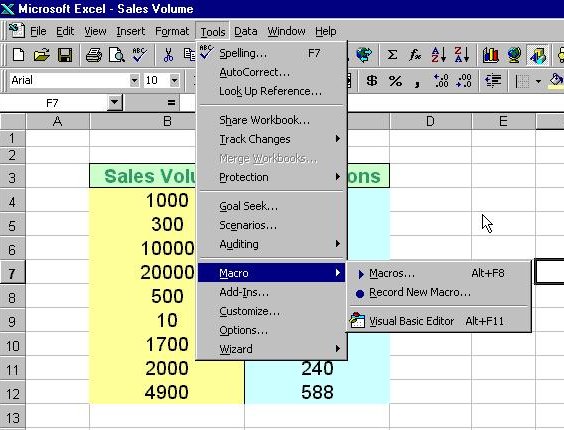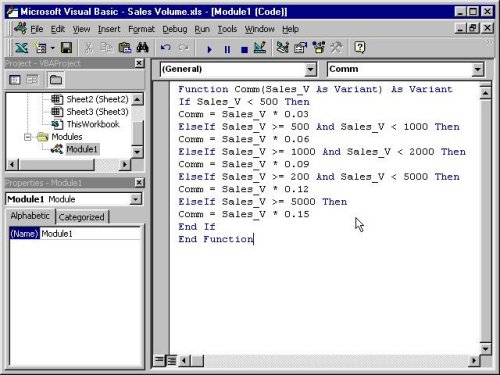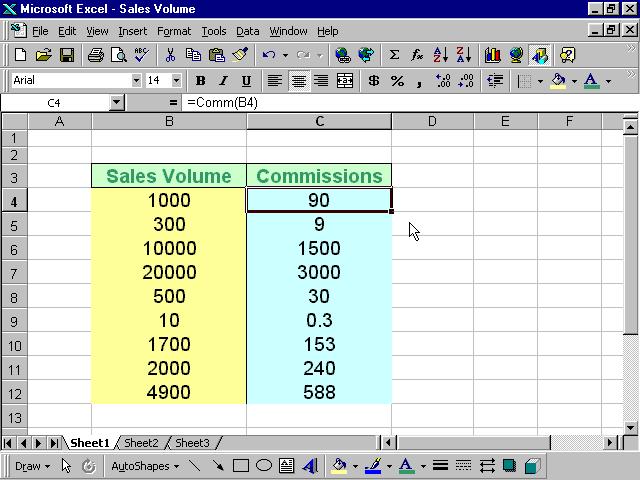15.1 Creating Excel VBA Functions
You can create your own functions to complement the built-in
functions in Microsoft Excel spreadsheet, which are quite limited in some
aspects. These user-defined functions are also called
Visual Basic for Applications functions,
or simply VBA functions. They are very useful and powerful if you know how to program them
properly. One main reason we need to create user defined functions is to enable
us to customize our spreadsheet environment for individual needs. For example,
we might need a function that could calculate commissions payment based on the
sales volume, which is quite difficult if not impossible by using the built-in
functions alone.
Table 15.1: Commissions Payment Table
| Sales Volume($) |
Commissons |
| <500 |
3% |
| <1000 |
6% |
| <2000 |
9% |
| <5000 |
12% |
| >5000 |
15% |
In table 15.1,
when a salesman attains a sale volume of $6000, he will be paid
$6000x15%=$720.00. A visual basic function to calculate the commissions
can be written as
follows:
Function Comm(Sales_V As Variant) as Variant
If Sales_V <500 Then
Comm=Sales_V*0.03
Elseif Sales_V>=500 and Sales_V<1000 Then
Comm=Sales_V*0.06
Elseif Sales_V>=1000 and Sales_V<2000 Then
Comm=Sales_V*0.09
Elseif Sales_V>=200 and Sales_V<5000 Then
Comm=Sales_V*0.12
Elseif Sales_V>=5000 Then
Comm=Sales_V*0.15
End If
End Function
15.2 Using Microsoft Excel Visual Basic Editor
To create
VBA functions in MS Excel, you can click on tools,
select macro and then click on Visual Basic Editor as shown in Figure
15.1
Figure 15.1: Inserting MS_Excel Visual
Basic Editor
Upon clicking the Visual Basic Editor, the VB Editor windows will
appear as shown in figure 15.2. To create a function, type in the
function as illustrated in section 15.1 above After typing, save the
file and then return to the Excel windows.
Figure 15.2 : The VB Editor
In the Excel window, type in the titles Sales Volume and Commissions
in any two cells. By referring to figure 15.3, key-in the Comm function
at cell C4 and
by referencing the value in cell B4, using the format Comm(B4). Any
value appear
in cell B4 will pass the value to the Comm function in cell C4. For the
rest of
the rows, just copy the formula by dragging the bottom right corner
of cell C4 to the required cells, a nice and neat table that shows the
commissions will automatically appear (as shown in figure 15.3). It can
also be updated anytime.
Figure 15.3: MS Excel Windows- Sales Volume






0 comments :
Post a Comment